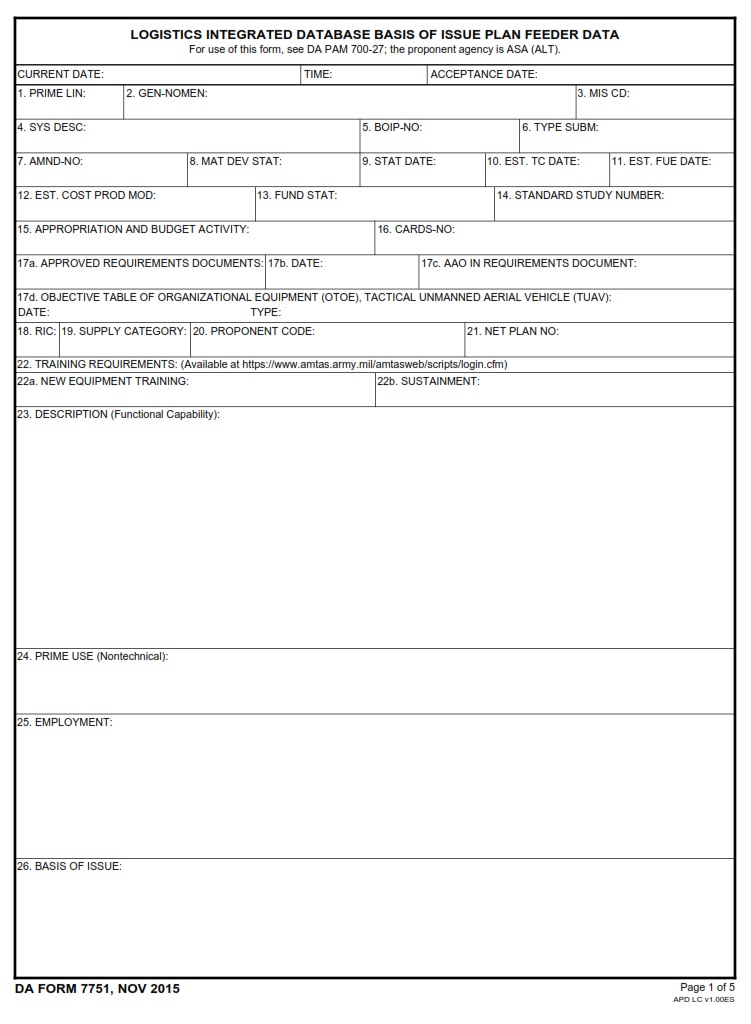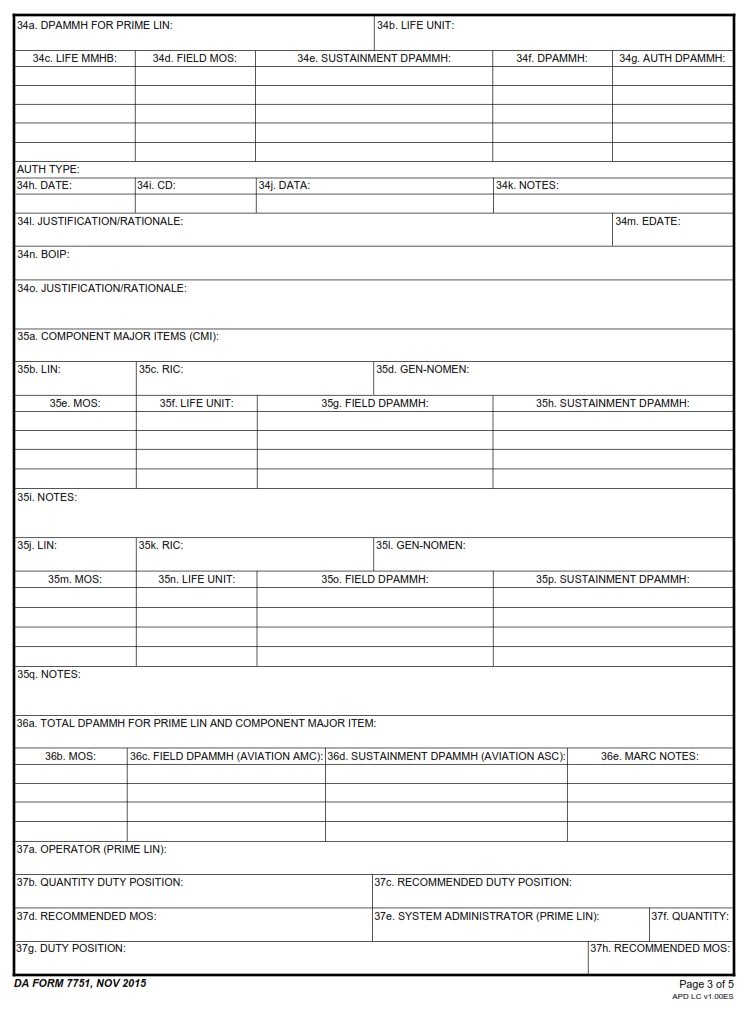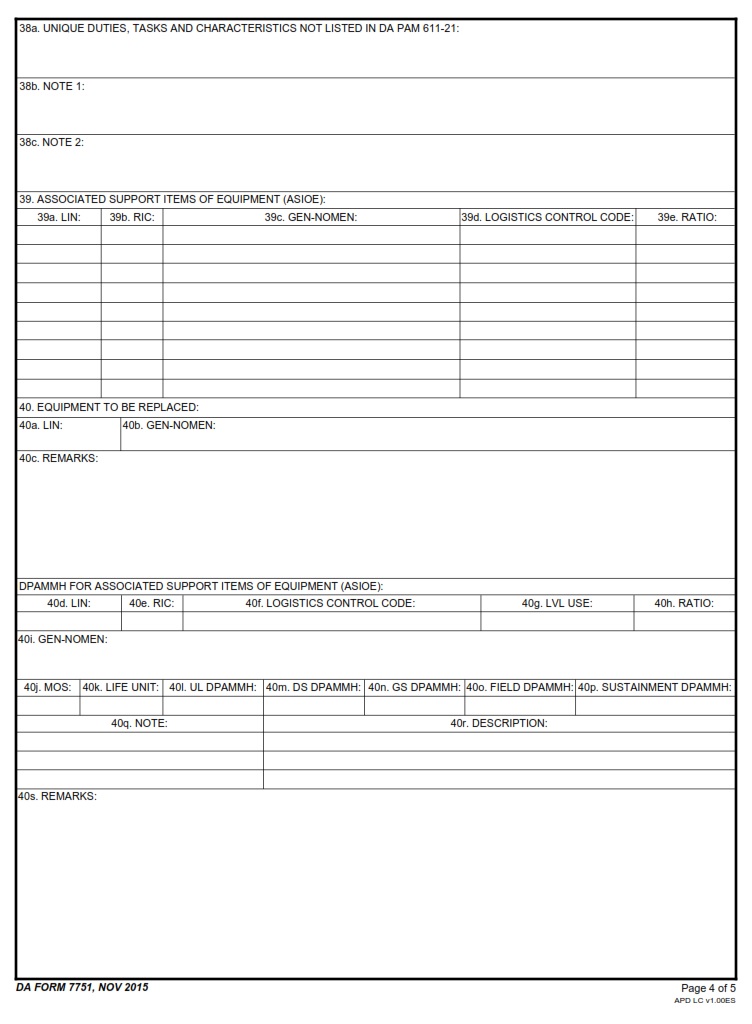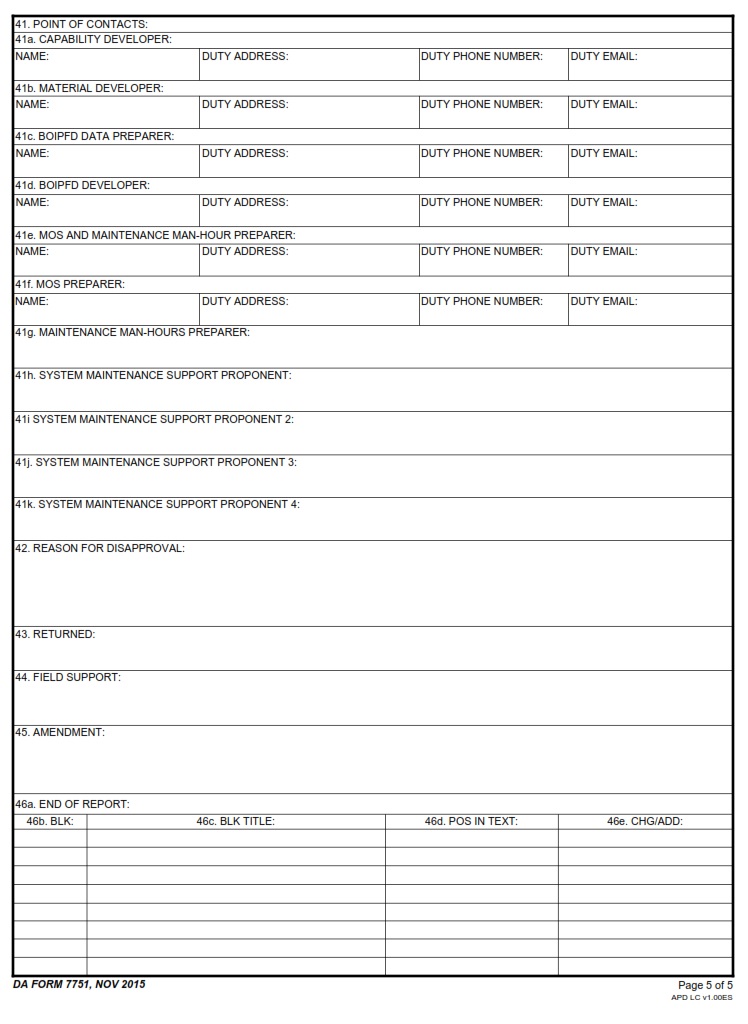Table of Contents
FREE-ONLINE-FORMS.COM – DA Form 7751 – Logistics Integrated Database Basis Of Issue Plan Feeder Data – Imagine a world where everything you need is just a click away. A world where logistics operations run seamlessly, ensuring supplies are delivered at the right time and in the right quantities. Well, that world is not far-fetched anymore with the DA Form 7751 – Logistics Integrated Database Basis Of Issue Plan Feeder Data. This cutting-edge database revolutionizes how we manage and track inventory, providing real-time information to optimize logistical processes. In this article, we will dive deep into the capabilities of DA Form 7751 and explore how it transforms supply chain management from a headache to a well-oiled machine.
Have you ever wondered how military units coordinate their vast array of supplies? From ammunition to fuel to spare parts, keeping track of everything can be an overwhelming task. But fear not! The DA Form 7751 – Logistics Integrated Database Basis Of Issue Plan Feeder Data comes to the rescue. This powerful tool streamlines logistics operations by centralizing all essential data into one coAmprehensive database. Join us as we unravel the mysteries behind this game-changing form and discover how it redefines efficiency in military supply chains.
Download DA Form 7751 – Logistics Integrated Database Basis Of Issue Plan Feeder Data
| Form Number | DA Form 7751 – |
| Form Title | Logistics Integrated Database Basis Of Issue Plan Feeder Data |
| Edition Date | 11/1/2015 |
| File Size | 57 KB |
What is a DA Form 7751?
A DA Form 7751 stands for the Logistics Integrated Database Basis Of Issue Plan Feeder Data. It is a crucial document used in the military to manage inventory and supply chain operations effectively. This form plays a vital role in ensuring that all necessary equipment, supplies, and resources are available when and where they are needed.
The DA Form 7751 provides detailed information about each item in terms of its description, stock number, quantity on hand, unit of issue, and other relevant data. It allows planners and logisticians to track the movement of goods throughout the military logistics system accurately. This form also acts as a basis for ordering new supplies or reordering existing ones based on demand analysis.
Without the accurate information provided by the DA Form 7751, potential delays or disruptions in essential supplies could occur within military operations. By maintaining an updated and comprehensive database through this form, commanders can make informed decisions about resource allocation and deployment strategies. Ultimately, this helps ensure mission success by keeping military personnel equipped with everything they need to carry out their duties effectively.
In conclusion, the DA Form 7751 is not just a piece of paper; it is an integral part of military logistics management. By providing real-time data on inventory levels and requirements, it enables efficient planning and resource allocation. The accurate tracking of supplies facilitated by this form ensures that soldiers have what they need when they need it most – supporting effective mission execution and safeguarding lives in high-stakes environments.
Where Can I Find a DA Form 7751?
If you’re in the military or work in a logistics-related field, chances are you may be wondering where to find a DA Form 7751. This form, otherwise known as the Logistics Integrated Database Basis Of Issue Plan Feeder Data, is an essential tool for planning and managing military logistics operations.
So, where can you find this important document? The best place to start your search is online. The official website of the Department of Defense offers a plethora of resources and forms for download, including DA Form 7751. Additionally, various army and military websites provide access to these forms for easy download and printing.
In addition to official websites, it’s worth checking with your specific unit or department for instructions on obtaining a DA Form 7751. Your chain of command will likely have access to these forms and can provide guidance on how best to obtain them. Remember that maintaining accurate records is crucial in any logistical operation. So don’t hesitate to consult with your superiors or colleagues if you need assistance with finding this form.
DA Form 7751 – Logistics Integrated Database Basis Of Issue Plan Feeder Data
DA Form 7751, also known as the Logistics Integrated Database Basis Of Issue Plan Feeder Data, plays a crucial role in ensuring efficient logistics planning and management. It serves as a comprehensive tool that provides accurate and up-to-date information regarding item requirements, stock levels, and replenishment plans. By utilizing this form, organizations can effectively manage their resources and streamline supply chain operations.
One of the key advantages of using DA Form 7751 is its ability to facilitate effective demand forecasting. The feeder data contained within the form enables organizations to analyze historical usage patterns and predict future requirements accurately. This allows them to forecast demand more efficiently and make informed decisions regarding stock levels, reorder quantities, and lead time expectations.
Moreover, DA Form 7751 supports effective inventory management by providing real-time visibility into item availability. With this information at hand, organizations can proactively address stock-outs or overstock situations before they occur. They can monitor stock levels closely, identify potential issues in a timely manner, and take appropriate measures such as expediting deliveries or adjusting order quantities.
By harnessing the power of DA Form 7751 – Logistics Integrated Database Basis Of Issue Plan Feeder Data, organizations can optimize their logistics processes to operate with maximum efficiency. This form empowers them with accurate data for demand forecasting and inventory management – two critical aspects that determine supply chain effectiveness. With these insights at their disposal, businesses can meet customer demands promptly while minimizing costs and maintaining high service levels.




